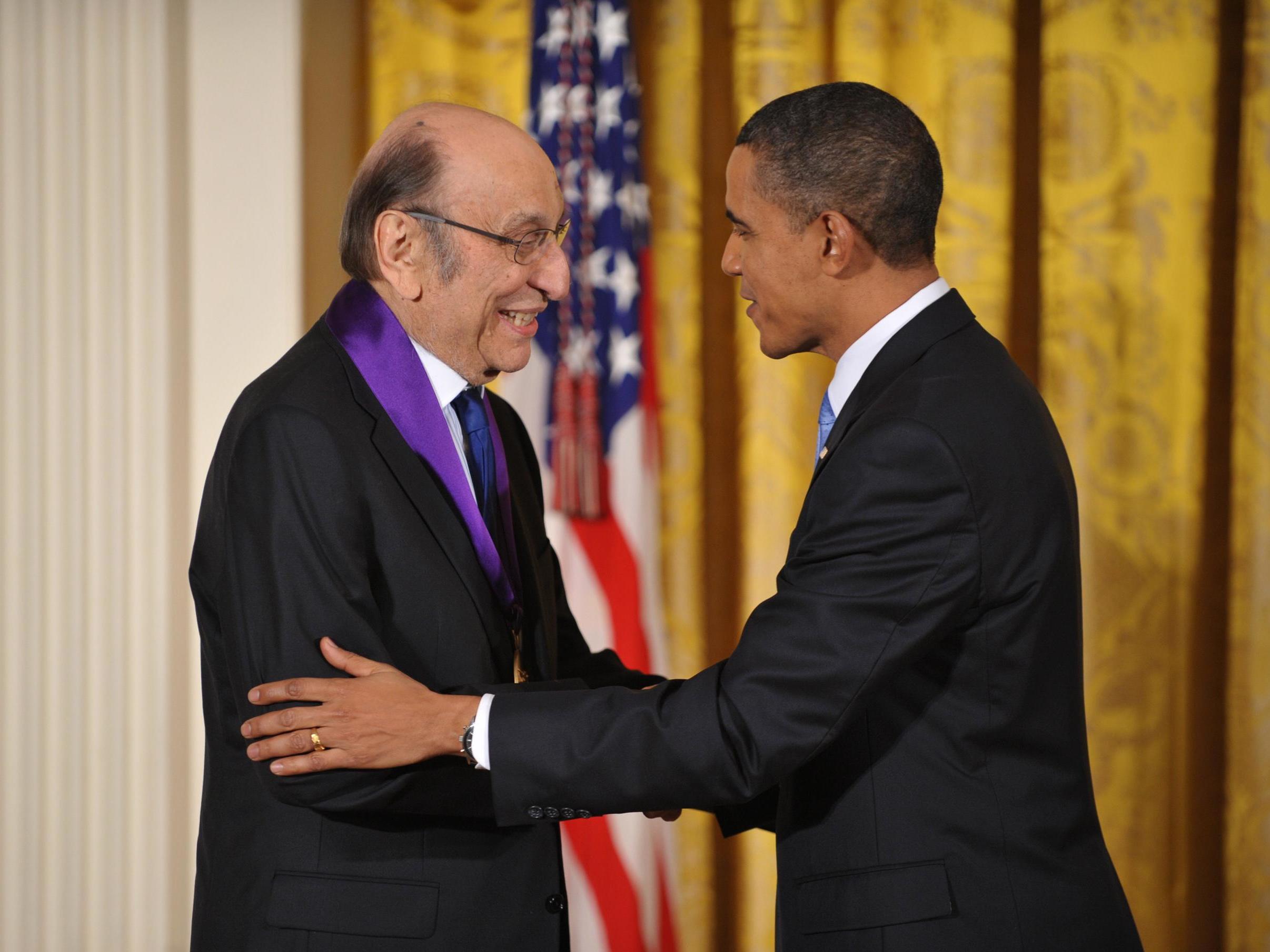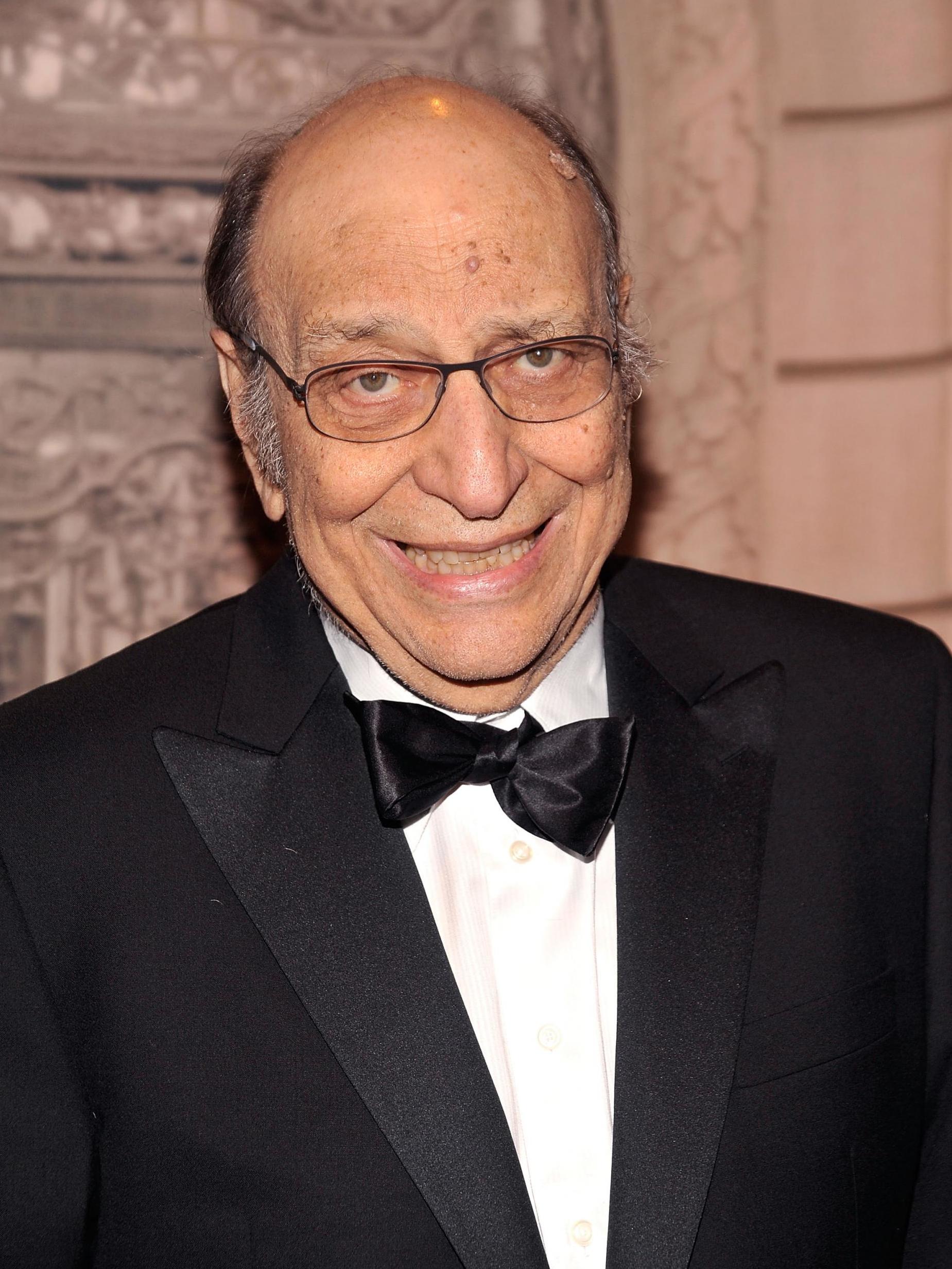Milton Glaser: Graphic designer who put the heart in ‘I love New York’
With editor Clay Felker, he co-founded ‘New York Magazine’ in 1968 and went on to design hundreds of issues that ‘established the format for the now-ubiquitous city magazine’

Your support helps us to tell the story
From reproductive rights to climate change to Big Tech, The Independent is on the ground when the story is developing. Whether it's investigating the financials of Elon Musk's pro-Trump PAC or producing our latest documentary, 'The A Word', which shines a light on the American women fighting for reproductive rights, we know how important it is to parse out the facts from the messaging.
At such a critical moment in US history, we need reporters on the ground. Your donation allows us to keep sending journalists to speak to both sides of the story.
The Independent is trusted by Americans across the entire political spectrum. And unlike many other quality news outlets, we choose not to lock Americans out of our reporting and analysis with paywalls. We believe quality journalism should be available to everyone, paid for by those who can afford it.
Your support makes all the difference.Milton Glaser’s creation of the “I heart NY” logo, as well as hundreds of other projects, helped make him one of the most influential graphic designers of his generation.
In a career spanning six decades, Glaser lent his talents to books, periodicals and posters – the usual province of graphic designers – as well as to films, restaurant interiors and public artworks.
He died at an assisted living facility in Manhattan on 26 June, his 91st birthday. The cause was complications from a stroke, said his studio manager, Ignacio Serrano.
With editor Clay Felker, he co-founded New York magazine in 1968 and went on to design hundreds of issues that “established the format for the now-ubiquitous city magazine”, said Michael Bierut, a prominent New York graphic designer.
However, Glaser’s renown rested foremost on the I heart NY motif, which was adapted, with slight modifications, around the world. “People everywhere were anxious to say, ‘I love something,’ ” Glaser said in a 2019 interview for this obituary.
So popular was the formulation that it became a kind of logo for the Bronx-born Glaser himself. With a deep voice, precise elocution and extraordinary powers of description, he served as a de facto spokesman for his profession. He was the only graphic designer ever to receive the National Medal of Arts, bestowed on him by President Barack Obama in 2010.
“At a time when European designers, especially in Switzerland, were defining the terms of vanguard design, Milton Glaser helped launch an alternative ethos rooted in American pop culture and counterculture,” said Ellen Lupton, senior curator of contemporary design at the Cooper Hewitt, Smithsonian Design Museum. “His more personal, narrative and permissive design philosophy itself became a worldwide phenomenon.”
One of Glaser’s most important early commissions came in 1966, when Columbia Records hired him to design a poster to be packaged with the Bob Dylan’s Greatest Hits LP. He created a silhouette of Dylan with a mane of twisted, brightly colored locks. More than six million copies were printed, making the poster a signature artefact of the “psychedelic era”. (Glaser later designed posters for such entertainers as Mick Jagger, Aretha Franklin and Jerry Garcia.)
Glaser traced the origins of the Dylan design to a Marcel Duchamp self-portrait from the 1950s and the jewel-like colours of Islamic art.
He often drew on the past to create images that seemed to capture the present. For the 1993 Broadway run of Tony Kushner’s Pulitzer- and Tony-winning drama Angels in America, Glaser designed a poster inspired by Albrecht Dürer’s 16th-century watercolour Wing of a European Roller.
In 1977, the New York State Department of Commerce launched an ad campaign to attract tourists and, not incidentally, improve the morale of New Yorkers amid a crime wave and financial crisis that had New York City teetering on bankruptcy. Glaser was tasked with creating a logo to accompany the state’s new slogan: “I love New York.”
He drew the original logo, with a heart in place of the word “love”, in the back of a taxi. That drawing, in red crayon on a scrap of paper, is now housed in the Museum of Modern Art. Glaser received a nominal fee, which he accepted because he expected the campaign to last, at most, a few months.
“There was a sense of desperation, despair, and also impotence that follows these kinds of conditions,’’ Glaser told the New York Times in 2008.
“It is one of those peculiarities of your own life where you don’t know the consequences of your own actions. Who in the world would have thought that this silly little bit of ephemera would become one of the most pervasive images of the 20th century?”
Glaser’s other seminal contribution to New York iconography was the magazine he founded with Felker, who once called Glaser “a gigantic creative force”.
His “densely packed layouts and illustrated ‘best-of’ listicles,’” Bierut noted, “became the visual corollary to the brand of urban service journalism that Felker pioneered.”
Among his other contributions to the magazine, Glaser co-wrote (with Jerome Snyder) “The Underground Gourmet”, a column about affordable restaurants. The column and guidebook by the same name helped shift attention from haute cuisine to varied ethnic fare.
Glaser designed restaurant logos and menus and even interiors, including that of the Windows on the World restaurant atop the World Trade Centre. He also reimagined the struggling Grand Union supermarket chain at the behest of its owner, tycoon James Goldsmith. Glaser began by giving the chain a new logo: a bright red circle nestled in the letter A. He then tackled labels, signs and the designs of the stores themselves, placing giant pears in front of some. Glaser said the grocery store makeover appealed to him because it was anti-elitist.
The son of Jewish immigrants from Hungary who ran a dry cleaning business, Milton Glaser was born 26 June 1929, and was raised in a Bronx housing complex dubbed Little Moscow for its population of leftists. Some residents were labour and civil rights activists who championed racially integrated housing.
He later told the Times that growing up amid that ferment was “like heaven” during the Great Depression. “You had this enormous commitment to the idea of human possibility, that you didn’t have to just accept existing conditions, you could change yourself and change society.”

At 8, he developed rheumatic fever and spent a year-long convalescence in bed. He passed the time creating an entire city of figurines from the pounds of clay his mother brought him. “Art had redeemed my life,” he told Believer magazine, “because I was never bored for a minute that whole year.”
As the years passed, young Milton became known for his ability to draw almost anything, as well as for his entrepreneurial instincts; he sketched naked women for older boys for a nickel apiece.
He studied at the High School of Music & Art in Manhattan, for which he later designed a logo, pro bono. With letters arranged on a musical staff, it was, he said, the only logo in the world that could be sung. After graduating in 1947, he enrolled at Manhattan’s Cooper Union.
At the time, graphic designers learned a modernist style that eschewed colourful flourishes. But a Fulbright scholarship, after Glaser graduated in 1951, took him to Italy, where he absorbed centuries of art history and studied with Giorgio Morandi, a painter of still-lifes so pared down they were considered revolutionary.
“It shifted me from modernism as the only resource to draw on,” he said. “History was not the enemy. You could use anything as raw material to make something.”
Returning to New York, Glaser had to decide whether to pursue fine art or commercial art – a distinction he eventually helped erode. He settled on commercial art because, he said, “I wanted to do work that was public. I wanted to do work that was on the street. I wanted to do work that people saw.”
From 1954 to 1974, Glaser ran Push Pin Studios, which, he said “celebrated all the things that the modernists taught us to hate”. Among those was surrealism. In many of his illustrations, Glaser juxtaposed items of vastly different scales, creating a slightly fantastical effect reminiscent of the work of Rene Magritte.
When he felt his output became repetitive, Glaser disbanded the studio. “Push Pin had become a style,” he said, “and I don’t trust style.” He continued to work – under the aegis of Milton Glaser Inc – in a red brick building on East 32nd Street that he bought in 1965. (He sold the building in 2019.)
Glaser cultivated an informal office environment that rewarded constant interaction, even interruption. He never had to write a memo, he once said, because everybody who worked for him heard everything that happened in the office.
From 1968 to 1977, he devoted much of his time to New York Magazine. In 1983, he and Walter Bernard, another prominent designer, opened a publication design firm called WBMG. They designed or redesigned scores of publications, including The Washington Post, the Village Voice, Esquire, Paris Match and the Brazilian newspaper O Globo, efforts chronicled in a 2019 book, by Glaser and Bernard, called Mag Men.

Glaser’s other publications included the book The Design of Dissent, a volume published in 2005 with his frequent collaborator Mirko Ilic, documenting protest posters, buttons and the like, a few of them by Glaser. He was the subject of a 2008 documentary, Milton Glaser: To Inform and Delight.
In 1957, he married Shirley Girton, a Cooper Union graduate who became an artist, author and gallery director. The couple collaborated on several illustrated books, ostensibly for children. She is his only immediate survivor.
Glaser mentored several generations of students, first at Cooper Union and then at the School of Visual Arts, an art and design college in Manhattan where he eventually served as acting board chair and to which he donated his archives.
In his later years, Glaser took on such clients as the Brooklyn Brewery and the Theatre for a New Audience and devoted more time to his first love: drawing. “Making art, he said, ”is an expression of a very fundamental instinct of the species.”
He was so closely associated with the “psychedelic era” that in 2014, the producers of Mad Men, the AMC drama set in the advertising world, asked him to design a poster for the final season of the series, set in 1969 and 1970. And after the 9/11 terrorist attacks, he created a variant of the I heart NY logo featuring a wounded heart and the phrase, “I [heart] New York More Than Ever.”
Milton Glaser, graphic designer, born 26 June 1929, died 26 June 2020
© The Washington Post
Join our commenting forum
Join thought-provoking conversations, follow other Independent readers and see their replies
Comments